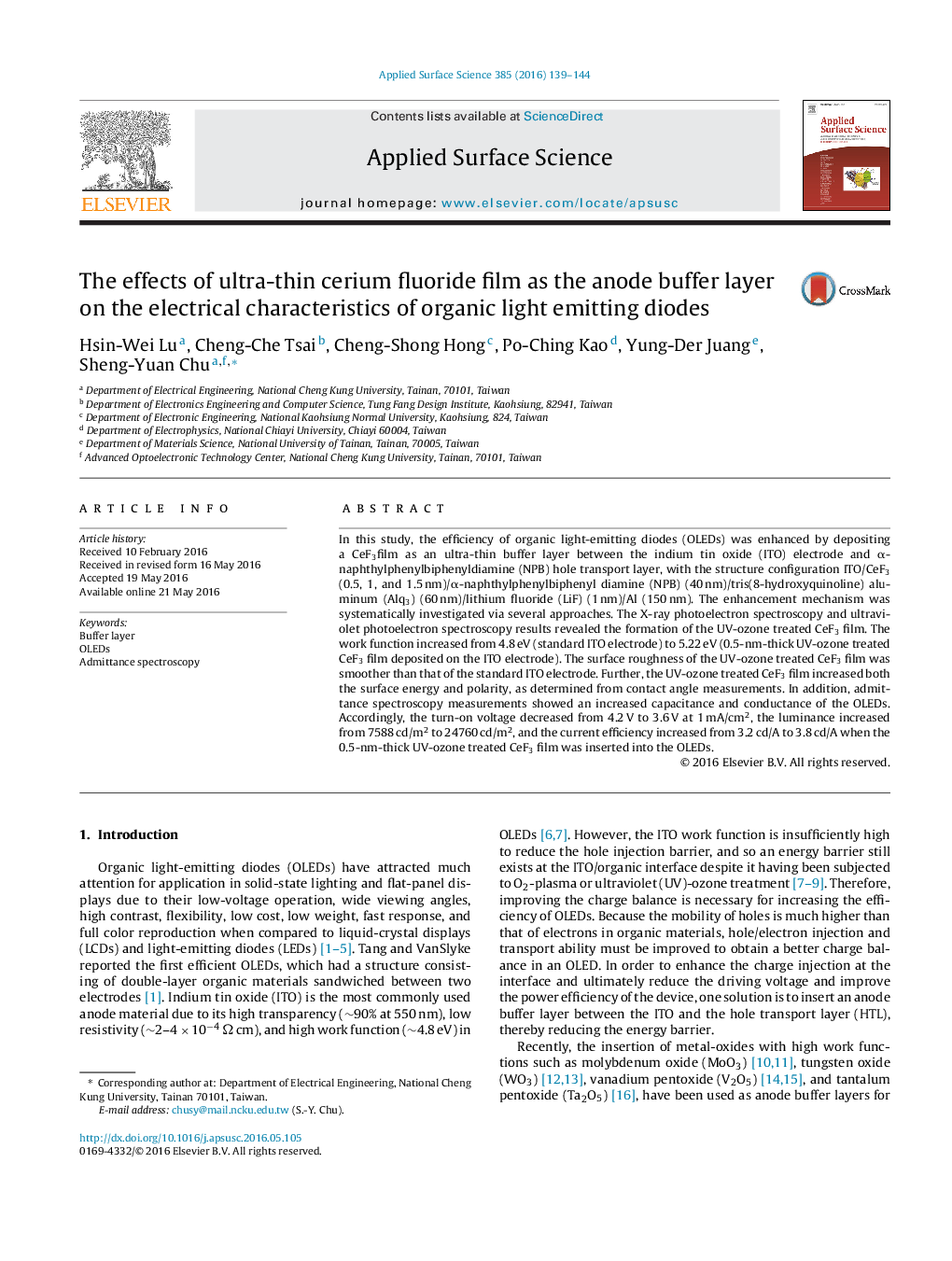| Article ID | Journal | Published Year | Pages | File Type |
|---|---|---|---|---|
| 5351926 | Applied Surface Science | 2016 | 6 Pages |
Abstract
In this study, the efficiency of organic light-emitting diodes (OLEDs) was enhanced by depositing a CeF3film as an ultra-thin buffer layer between the indium tin oxide (ITO) electrode and α-naphthylphenylbiphenyldiamine (NPB) hole transport layer, with the structure configuration ITO/CeF3 (0.5, 1, and 1.5 nm)/α-naphthylphenylbiphenyl diamine (NPB) (40 nm)/tris(8-hydroxyquinoline) aluminum (Alq3) (60 nm)/lithium fluoride (LiF) (1 nm)/Al (150 nm). The enhancement mechanism was systematically investigated via several approaches. The X-ray photoelectron spectroscopy and ultraviolet photoelectron spectroscopy results revealed the formation of the UV-ozone treated CeF3 film. The work function increased from 4.8 eV (standard ITO electrode) to 5.22 eV (0.5-nm-thick UV-ozone treated CeF3 film deposited on the ITO electrode). The surface roughness of the UV-ozone treated CeF3 film was smoother than that of the standard ITO electrode. Further, the UV-ozone treated CeF3 film increased both the surface energy and polarity, as determined from contact angle measurements. In addition, admittance spectroscopy measurements showed an increased capacitance and conductance of the OLEDs. Accordingly, the turn-on voltage decreased from 4.2 V to 3.6 V at 1 mA/cm2, the luminance increased from 7588 cd/m2 to 24760 cd/m2, and the current efficiency increased from 3.2 cd/A to 3.8 cd/A when the 0.5-nm-thick UV-ozone treated CeF3 film was inserted into the OLEDs.
Related Topics
Physical Sciences and Engineering
Chemistry
Physical and Theoretical Chemistry
Authors
Hsin-Wei Lu, Cheng-Che Tsai, Cheng-Shong Hong, Po-Ching Kao, Yung-Der Juang, Sheng-Yuan Chu,
